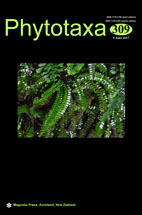Abstract
We compared Sedum formosanum with related species using morphological traits and molecular phylogenetic analysis of nrITS sequences. Morphological comparisons revealed that the plants historically treated as S. formosanum in the Danjo Islands of Japan had 4-merous flower; 8 stamens; narrow triangular sepals of equal size; horizontal carpels when matured; and an irregular branching form. These traits differed from those of S. formosanum in other regions, which has 5-merous flowers; 10 stamens, thick spatulate sepals of unequal size; erect carpels when matured; and a trichotomous branching form. Phylogenetic analysis indicated that plants known as S. formosanum in the Danjo Islands were sister group to S. tetractinum, which are endemic to China and belong to a different clade than S. formosanum, which are found in other regions. Based on the present morphological comparisons and phylogenetical analyses, we describe plants from the Danjo Islands as a new species, S. danjoense, which is distinct from S. formosanum.

